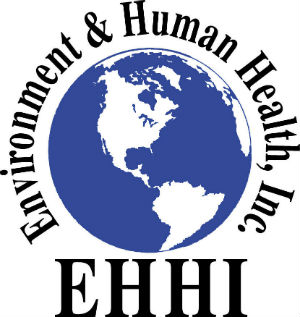Endocrine Disruptors: Press Release
Environment and Human Health, Inc. (EHHI), a non-profit organization of physicians and public health professionals, is releasing its new publication, “Endocrine Disruptors: Reduce Exposures Especially During Pregnancy.” The publication explains what endocrine disruptors are, how they affect the human body, what diseases they can cause, and where they are found. Endocrine disruptors (EDs) are chemicals that interfere with the normal function of the endocrine system, which is a network of glands and organs that secrete hormones. The endocrine system works with other bodily functions to regulate the human body, and when people are exposed to endocrine disrupting chemicals (EDCs) those chemicals can interfere with normal bodily functions. Dr. Hugh Taylor, MD, Professor and Chair of the Department of Obstetrics, Gynecology at Yale University’s School of Medicine, explained, “Pregnancy is a very sensitive window for exposures to endocrine disrupting chemicals (EDCs). EDC exposures are of particular significance during pregnancy, as fetal development is sensitive to maternal chemical, and environmental stressors. In utero exposures may compromise early developmental processes and predispose the fetus to adverse health risks later in life.” Some of the health effects that the ensuing child might experience from the mother’s exposures during pregnancy are: breast cancer, obesity, diabetes, attention-deficit/hyperactivity disorder (ADHD), early-onset of puberty, low sperm count and endometriosis. In order for women to reduce their exposures to EDCs, it is critical that they know where these chemicals are found. EDCs are chemical compounds that people are exposed to in their daily lives, including industrial, household, and personal care products. Some of these endocrine-disrupting chemicals are found in: dryer sheets, scented candles, both hard and soft plastic products, flame retardants, fragrances, BPA that lines the cans of vegetables, fruits and sodas, and pesticides. “The endocrine disrupting chemicals in pesticides have been liked to adult obesity, as they act to increase fat tissues growth. These chemicals have also been connected to malignancies, including breast, prostate, vaginal and thyroid cancers,” warned Dr. Barry Boyd, MD, Yale University School of Medicine, Oncologist at Smilow Cancer Center – Greenwich.
"Because endocrine disrupting chemicals are able to affect how your hormone system works, and thus interfere with its natural regulation, it is very important to reduce your exposures to these chemicals wherever possible,” stated David Brown, Sc.D., Public Health Toxicologist and past Chief of Environmental Epidemiology and Occupational Health at Connecticut's Department of Health. Because it has been proven that endocrine-disrupting chemicals cross the placenta and thus can expose the unborn baby to these chemicals, pregnancy is a very critical time of exposure. “While it is true that endocrine-disrupting chemicals are now ubiquitous in our environment, understanding where they can be found makes it easier to avoid many of them and reduce exposures. Reducing exposures is critically important, especially during the times of pregnancy,” said Nancy Alderman, President of EHHI.
